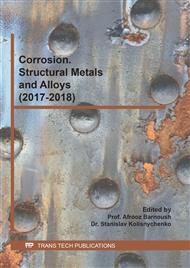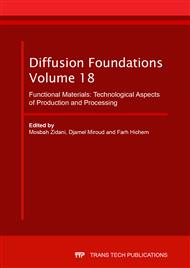p.35
p.41
p.49
p.55
p.65
p.73
p.79
p.86
p.94
Mechanical and Electrochemical Properties of AISI4130/Austenitic Steels Dissimilar Welded Joints
Abstract:
The microstructure and mechanical properties of AISI 4130 and austenitic stainless-steel overlay dissimilar weld joint using Shield Metal Arc Welding (SMAW) process were investigated. Two different filler alloys have been employed (ENiCrFe-3 and E309 MoL-17). A type II boundary was formed close to the fusion boundary at the AISI 4130 side, due to the diffusion of carbon from the carbon steel (CS) base metal towards the weld metal. On the other side, the joints strength and hardness profiles were almost independent of filler alloy, where the highest hardness value was recorded in the area between the line fusion and the type II boundary. The polarization tests performed in different regions of the welded joints in H2SO4 solution (PH 4.7) revealed a high corrosion resistance of both filler alloys.
Info:
Periodical:
Pages:
65-72
Citation:
Online since:
September 2018
Authors:
Keywords:
Price:
Сopyright:
© 2018 Trans Tech Publications Ltd. All Rights Reserved
Share:
Citation:



